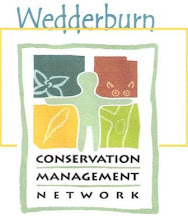
Monitoring consists of checking all known mounds against a set of constant national standards and parameters. These parameters consist of size, vegetation, disturbance and evidence of bird presence. This is done on a twelve monthly basis during the breeding season, though some very old mounds are only checked five yearly. Mounds are also photographed at the same time to record visual differences.
Studies of Malleefowl have shown that birds prefer to renovate an old nest site rather than start from scratch (literally!) on a new one. We also know that in an active mound, birds will lay eggs (the number varies with conditions) and most of these hatch. An infra-red camera set on a nest mound at present is demonstrating this, and hopefully will quantify the number of eggs laid and hatched this season.
However a camera will not give us information on the most critical aspect of Malleefowl conservation which is whether the young chicks are surviving to egg laying adulthood. For the CMN conservation efforts to be considered successful we need to see an increase in the active (i.e. egg-laying) population of Malleefowl.
So this is why it is so important to have the monitoring take place. The monitoring effort this year at all known mounds in the Korong Vale, Skinners Flat, Wedderburn and Wychitella Blocks has recorded four pairs of breeding birds, the same as last year. This is a positive sign that Malleefowl are still doing OK in the Nature Conservation Reserve. Whilst one of last year’s active mounds in Wychitella block is not active this year it was with great joy that an old mound in Korong Vale block was found to be renovated and active! We do not know what has happened to the pair in Wychitella that bred last year. Maybe one or both birds have deceased by natural causes or predation or possibly they have moved to a new unknown location. It may even be that the birds have decided not to nest this year. This happened to the pair on my block much to my consternation, however they returned the next year and have continued since then. Next year’s monitoring may reveal more.
The program also collects bird feathers, which will allow DNA testing to tell us if we have new birds or old birds relocating. Fox scats are also collected for studies into fox diet. The program was designed by scientists and is used Australia wide. After 15 years of national data gathering it is an immense body of observations that can be used for studies into Malleefowl. We now have four or five years of data and photographs specific to Wedderburn entered onto the National Malleefowl Database.
As Wedderburn has a small population of Malleefowl, and the most isolated remnant population in Victoria, it is important that more of the area be searched to find any more nest mounds. This, with annual monitoring, will give us an accurate picture of what is happening to Malleefowl in our area.
Doug Pocock
Photograph - malleefowl on an active mound

No comments:
Post a Comment